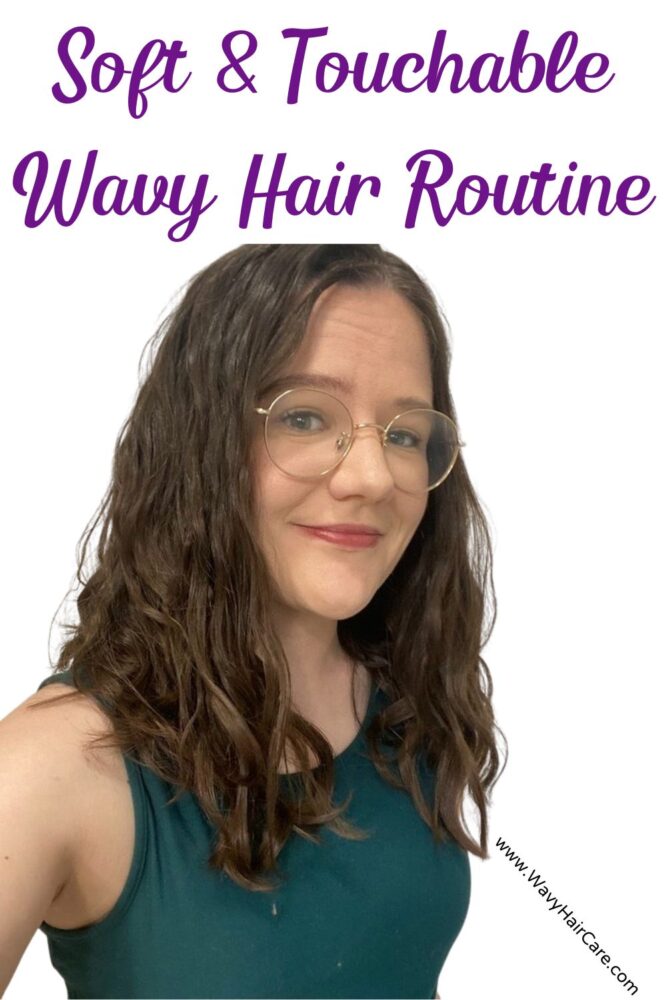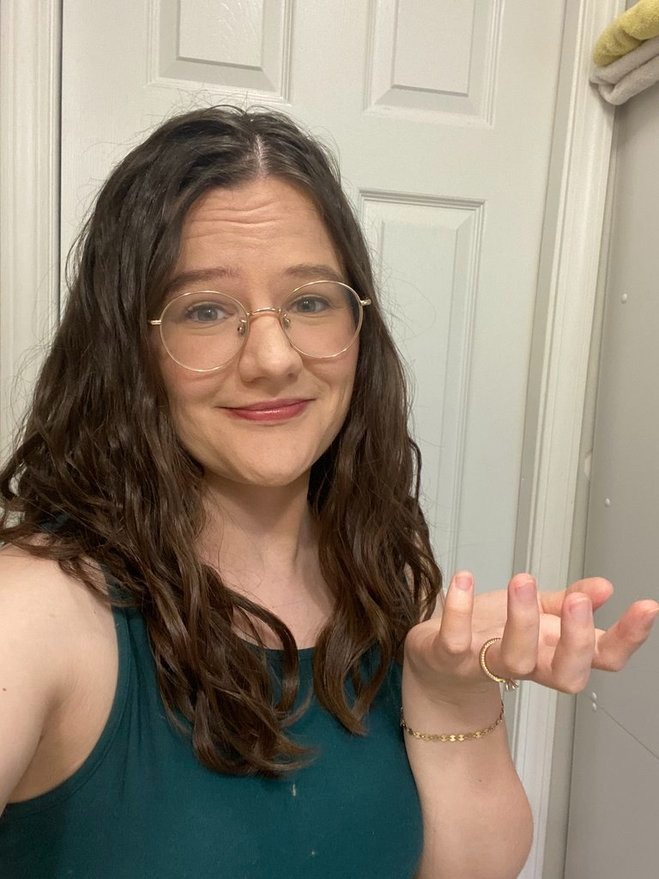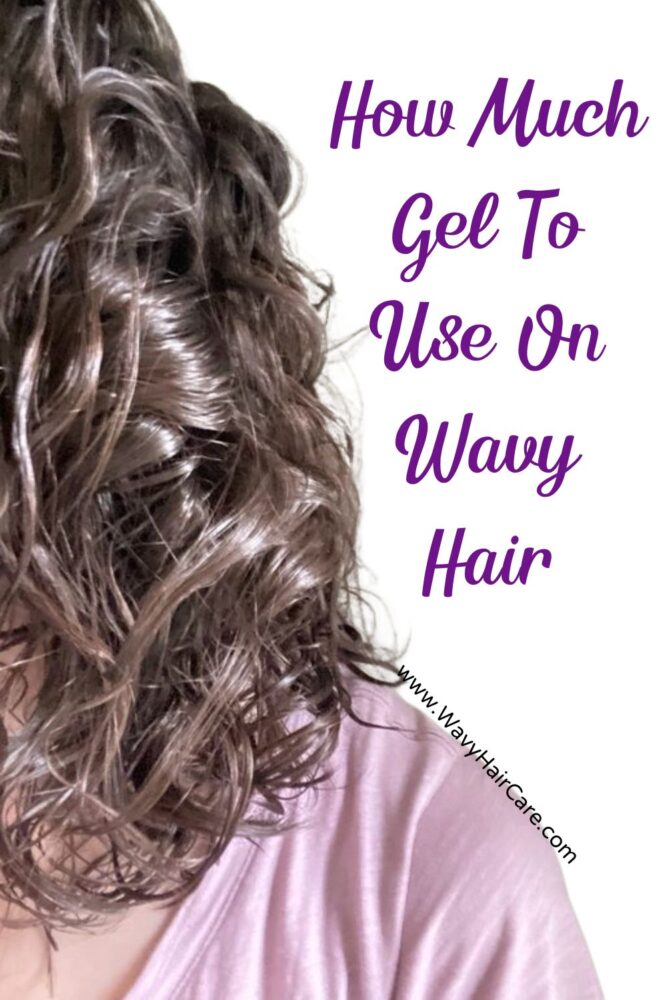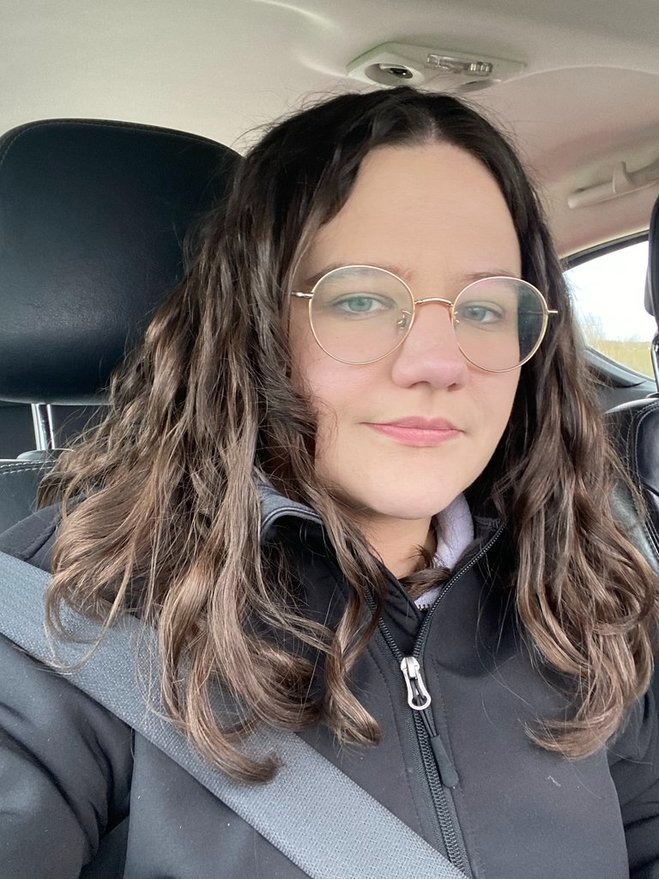If your TikTok algorithm shows you content about wavy curly hair, you’ve almost certainly come across content for Irish curls in the last couple of months. It’s become a really commonly discussed concept in the wavy curly community on there. I’ve also seen some content about Celtic Curls lately! I thought I’d address these topics here on the blog because I’ve never covered these before and I know people are coming across some of it on TikTok and are curious!
By the way, if you aren’t following me on TikTok, please do! My username is WavyHairCareBlog.
@wavyhaircareblog
What Are Irish Curls?
Irish curls refers to hair that is straighter on top, and wavier or curlier underneath. Many people on TikTok have linked this type of hair with having Irish heritage.
It is very common for people with wavy hair to have straight or at least straighter hair on top (aka on their canopy). Whether or not this has anything to do with Irish heritage is extremely debatable. To be honest, my best guess is that it is unrelated! Of course people who are Irish can have this hair type, but they may also have straight hair, wavy hair all over, or curly hair all over. Also, lots of people have this hair type but do not have Irish heritage.
That being said, if people are Irish and have this hair type and enjoy using this phrase, then of course that’s fine for them to use this terminology. Also, even if you choose not to refer to your hair as Irish Hair, if you have this hair type and want help styling it or caring for it, you’re in the right place!
Far less often, but I have also seen some people say that they think Irish curls are unique from other curl types because they believe people with Irish hair are more likely to have fine hair strands and low porosity hair. Hair porosity and thickness definitely vary, but having a combination of low porosity and fine hair is not particularly rare in general, it’s my own hair type and is pretty common for people with wavy hair. It does require some specific care vs other types of wavy or curly hair but I believe that to be true of all hair types. If you aren’t sure of your own hair thickness and porosity, check out my blog post how to determine your wavy hair type.
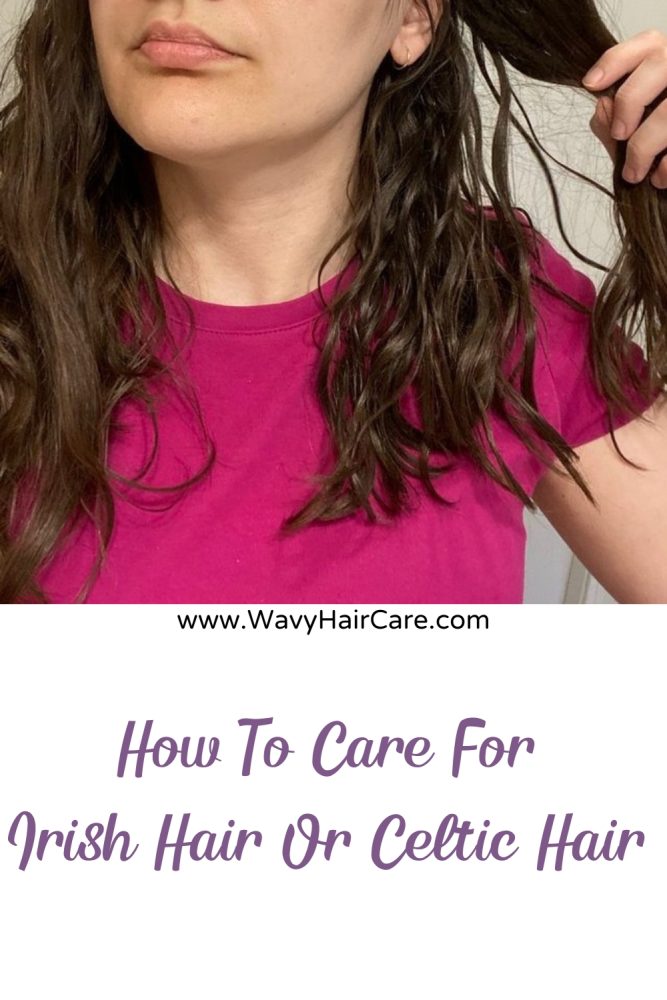
What are Celtic Curls?
Some people are expanding the idea of Irish Hair or Irish Curls to also include other Celtic heritage. It’s essentially the same thing as Irish Hair.
Do Irish People Have An Exclusive Hair Type?
Since starting this blog and trying to really “nerd out” with reading hair research, I have been SHOCKED at how little research is done on hair. Companies sometimes do research about how hair responds to their particular products, but studies being done on hair just for the sake of learning more about human hair, are surprisingly rare.
I read a hair chemistry textbook that essentially apologized for how what research we do have on human hair largely was based on the idea of there being three main human hair types. They broke hair down by caucasian, African-American, and Asian categories. People of other ethnicities or nationalities were just left out, and they don’t have any great reason for why these three categories were chosen! In some cases, caucasion hair was broke into categories based on straight or curly, and brunette vs blonde, or sometimes gray hair was analyzed separately as well.
There were common differences found in those three categories, not just in texture but also in the percentages of different proteins in the hair, the thickness of the hair cuticle and more. I suspect that genetic differences in our hair, largely correlated to our heritage, may impact how our hair looks, feels and how it responds to different styling techniques. Whether or not there is a particularly unique property to Irish hair or Celtic hair just isn’t well researched as far as I have been able to determine. My personal suspicion is that human hair comes ina lot of varieties that exist on somewhat of a spectrum, rather than there being 3, or 5, or even 500 strict hair types.
Another View Of Irish Hair And Celtic Hair
Another way of looking at this hair type that is wavier or curlier underneath and straighter on top is to call it an uneven curl pattern. Having an uneven curl pattern is extremely common, if not the norm, for people with wavy hair. Images in media leave us feeling like wavy and curly hair “should” be perfectly uniform, but that isn’t how the vast majority of people with naturally wavy hair or naturally curly hair find their hair to be. It’s normal for your hair to be curlier in the back of your head than the front, or on the underside of your hair rather than the top. It’s also common for people to have tighter curls at their temples and/or at the nape of their neck where hair is usually more fine.
I have an article covering how I tighten my straighter section and manage my uneven curl pattern if you want to check it out. I also covered the same topic in a YouTube video which you can watch below. If you aren’t subscribed to me on YouTube, please subscribe!
Why Irish Hair Has An Uneven Curl Pattern
The most important thing to know about Irish hair or Celtic hair is that it’s highly likely that the reason the top layer of your hair is straighter than the bottom is the exterior hair is more damaged. I do not mean to suggest that there isn’t some genetic or natural difference in your curl pattern from the top to the bottom. There likely is! However, when there is a big difference in curl pattern from one part of the the head to another, damage is almost always a meaningful factor. This damage is also pretty natural and happens for a variety of different reasons!
Did you know that the sun and even pollution in the air can damage our hair? It’s true, especially for hair that has been bleached, permed or chemically straightened, or is naturally light such as blonde or white/gray. The exterior of our hair gets more access to the sun, wind and environment in general.
The canopy or our hair also comes into contact with hats, our pillow and other surfaces more than the underlayer of our hair. When our hair comes into contact with hats and so on, it can be damaged by friction. Exposure to the elements allows moisture to be extracted from the exterior of our hair more rapidly, so the hair closer to our neck stays more moisturized which can help it stay wavy or curly. Finally, the exterior of the hair is often the first part of our hair to come into contact with the water from our shower head, so if you’re using a high pressure showerhead this can be rough on the exterior of your hair.
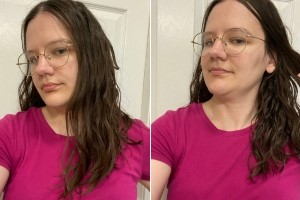
How To Care For Irish Hair
Everyone’s hair is a little bit different, including those within the same national background. As a result, what works for your Irish hair may vary some from what works for another Irish person’s hair. Finding the perfect hair care routine for you will require some trial and error. However, I’ll share some advice that is likely to work well for people with Irish hair, Celtic hair, or other forms of uneven curl patterns:
Treat your hair like wavy hair rather than straight hair. This means you don’t brush your hair after the shower, and you use a styling product like gel or mousse to help form your waves and curls. Diffusing instead of air drying is often really helpful. If the top layer of your hair acts really straight, you may not be convinced that all of your hair is wavy. In that case, I’d highly recommend reading my post How To Test If Your Hair Is Wavy. It’s my most popular post of all time and for good reason. SO many people have told me it has changed their life!
Give extra love to your straighter section. Giving extra care and support to the straighter portions of your hair can help really maximize their wavy or curly potential. For example, if you spend more time scrunching the straighter portions and diffuse them first, they might dry up a little tighter than they otherwise would. In some cases, also giving a bit less help to the curlier portions of your hair can help create more balance. For example, maybe you really scrunch the straighter portions of your hair tightly, and don’t scrunch the curlier portions at all so that when they dry they dry with a more even curl pattern. Another option is to finger-coil, finger-roll, or brush-style the top layer.
Get a layered haircut. Not just any layered cut, but one from someone who really knows wavy curly hair. Layered haircuts by a specialist who understands wavy hair and who understands that the canopy portion of your hair is straighter than the underside can help you get layers that give “lift” to your top layer to help it be as wavy or curly as it is capable of, while also letting your under layers peak out more!
